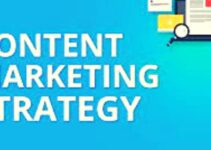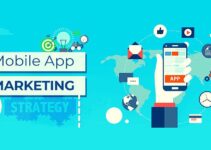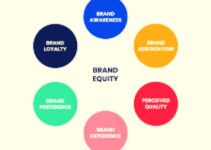Introduction
Any form of marketing that utilizes electronic instruments in order to send the message and evaluate its impact. Practically speaking the promotional campaign of digital marketing appears on devices like tablets, smartphones, and computers. It could be in the form of social media posts, display ads, and online video ads. Today, we’ll discuss what is digital marketing, its types, and its benefits in detail.
Approximately more than 3 quarter of the US people do online surfing regularly and almost every day, and the rate is much higher among smartphone users. Roundabout 31% of US people stay online all the time, and 89% of the people go online once a day. However, you should exploit the digital platforms by launching digital ads. It’s time to discuss what is digital marketing in detail?
What is Digital Marketing?
Digital marketing also goes by the name of online marketing. It’s a process of promoting your business and connecting with customers by using the internet and various other digital channels. However, it comprises texting, online advertisements, social media channels, emails, and multimedia messages.
In simple words, we can say digital marketing is when your marketing and promotional campaign follows digital communication.
Inbound vs. Digital Marketing
Many people confuse inbound marketing with digital marketing. It’s because digital marketing uses some common tools like online content and email as inbound marketing. However, the objective of both marketing techniques is to attract the attention of potential customers in the earlier stages of the buyer journey and make them actual customers.
Digital marketing analyzes that how various tools convert prospects into actual customers. It uses various platforms and strategies or puts all of its focus on one platform.
Inbound marketing studies various marketing tools and analyzes their effectiveness in terms of customers. How it would make the sale happen and at which phase of the sales funnel.
As a professional marketer, the most significant thing to remember about inbound and digital marketing is that you don’t have to choose either one of them. For better results, you should use both of them in combination. Inbound offers purpose and structure to digital marketing for its effectiveness in order to achieve its goals and objectives.
B2B vs. B2C Digital Marketing
Digital marketing is suitable both for B2C and B2B businesses and companies, and there’s a lot of difference between both of them. Some of the main differences are as follows;
- The sale decision-making process of B2B clients takes a lot of time, and it allows you to build long-term relations with clients. The sales decision of B2C shoppers is quick and it remains for the short term.
- The marketers of B2B follow rationality, evidence, and logic in their transactions. The transactions of B2C happen because of the emotions and likeness, and their goal is to make the customer feel good.
- B2B decisions require the input of more than one person, and the marketing content you offer should be easy to download and share. B2C shoppers prefer face-to-face connections with the brand.
Types of Digital Marketing
Some of the main types of digital marketing are as follows;
SEO
SEO (search engine optimization) is the process of ranking up the position of web pages in the search engine. Technically speaking, it’s more of a tool than a type of marketing. The science and art of SEO play a significant role and it requires you to learn and adapt various techniques to improve the ranking. Some of the main elements to consider while optimizing your website are as follows;
- Quality and number of inbound links
- Mobile-friendliness
- User engagement
- Quality content
The unpredictability of SEO makes it art and strategic work makes it a science. There is not any particular method to improve the ranking, because Google updates its algorithm consistently. Therefore, you should keep evaluating the statistics of your website and making the relevant adjustments accordingly.
Content Marketing
Content marketing follows the strategy of distributing the most relevant content to the target users, and SEO is the main element of content marketing. The objective of content marketing is to generate sufficient leads and increase the conversion rate, and it’s not different from traditional marketing.
Here you offer free written content to the target users in order to help them, instead of luring with the ads of products/services. Some of the statistics of content marketing are as follows;
- 92% of the businesses think that written content is their valuable asset
- Approximately 5000 employees of the 62% companies create content every day
- 84% of the customers expect useful content from their companies
The effective content marketing strategy is very tricky, and the content marketing writers improve the ranking by engaging with people and encouraging them to share it. When you provide the relevant content, then it amplifies the process of conversion.
Social Media Marketing
Social media marketing means connecting and engaging with people via healthy discussion in order to spread brand awareness and driving traffic. Facebook, YouTube, Linked In, Instagram, and Twitter are some of the main social media platforms. However, the engagement of both B2C and B2B marketers is equally good on social media platforms.
Social media platforms offer built-in metrics in order to evaluate the performance of your post in terms of customer reach, user engagement, shares, and likes. These parameters help you to analyze the growth of your website.
Many brands don’t use social media platforms to increase the sale of their products/services, instead, they try to connect with the target audience and spread brand awareness. After connecting with their target customers, companies then offer their products/services and encourage them to buy them.
PPC Marketing
PPC (pay-per-click) market is when you launch an ad on any webpage, and you’ll pay the platform every time when people click on your advertisement. When a position gets vacant on the search engine, it goes for auction, and potential advertisers bid for the spot and the highest bidder wins the position. However, the algorithm evaluates various factors for ad-placement;
- Bid amount
- Quality of landing page
- Relevance of the keyword
- Quality of the ad
When people click on the target ad, then they call it conversion rate. It could be transactional or non-transactional.
Affiliate Marketing
Affiliate marketing is the process of promoting the business/products/services of others and earning commission per sale. It follows the business model of sharing revenue. For instance, you’re a business owner, and you’ll hire an affiliate marketer to promote your product on his platform, and the affiliate would get his commission per sale.
Some affiliates prefer to publish the review of the product they’re promoting, and the others develop connections with various merchants. Whether you’re an affiliate marketer or looking, you should develop links with a third party. Now, you can launch a retailer program, or establish a platform to connect retailers with affiliates.
Native Advertisement
Native advertising is the disguised form of marketing. The objective of native advertisement is to blend in with the content so that the advertisement becomes less obvious. It came to existence due to the negative perception of ads among customers. It’s because customers know the advertiser received to create the ad, it means it would be biased and prejudiced.
Therefore, you always label the native ad by writing sponsored and promoted posts of content. If you hide such information, and the customer would find out later after spending a lot of time and energy, and it would break their trust.
When customers know about your offer and sponsored, then they would feel relax and much better than being lied to when you hide the information.
Marketing Automation
Marketing automation means using the applications and software for marketing and promotional campaigns in order to improve relevance and efficiency. It allows you to meet the personalized requirement of customers. Like;
- Sending and posting the right marketing messages to the target users at the right time
- And designing a focused marketing campaign
- Gathering and analyzing the customer information
When you use marketing automation tools, then it would help you when to come up with the right content and how to use and approach users.
Email Marketing
Email marketing is when you send a promotional message to all of your potential customers with the expectation that they would read it. Before sending the email, you have to make sure that your email doesn’t get spammed. Some of the things that you should keep in mind;
- Combining both promotional and transactional emails
- Provide unsubscribe option
- Mention it clear that it’s for subscribers
- Personalize it by calling the person’s name
Email marketing is a very effective strategy. While sending the email, you should make sure that the customers perceive it as a valuable offer, not just a promotional campaign.
Benefits of Digital Marketing
Some of the main benefits of digital marketing are as follows;
Vast Reach
Since digital marketing use online and has amplified it reach its reach to a global level. You can target different types of markets anywhere across the world.
Cost Efficiency
If you compare the cost of digital marketing with traditional marketing like TV ads and newspapers, then it’s very low. It allows you more control over targeting the right audience and setting up your budget.
Measurable Results
After launching the marketing campaign, next you want to know whether your marketing campaign is working or not. Digital marketing offers you very good metrics to measure the performance of your campaign so that you could make changes accordingly.
Personalization
You can easily gather personal information about customers. The automation tools of digital marketing allow you to analyze and manage the information, and then send the personalized messages to the customers.
Connection with Users
One of the main features of digital marketing is to connect with target customers. It’s like a personal face-to-face type of connection, if users have doubts and questions, then you can answer them during the engagement.
High Conversion Rate
The conversion rate of digital marketing is higher than any other form of marketing because the metrics allow you to check the performance of your campaign. If their marketing campaign is not working, then you can make some changes in order to put it on the right track.
Conclusion: What is Digital Marketing? Types, Advantages
After an in-depth study of what is digital marketing, its types, and its benefits; we’ve realized that D marketing is very important for businesses and companies. If you want to use D marketing for your business, then keep in mind its various types, and use the one that is good for your business.

Ahsan Ali Shaw is an accomplished Business Writer, Analyst, and Public Speaker. Other than that, he’s a fun loving person.


